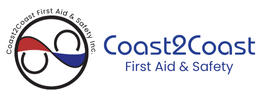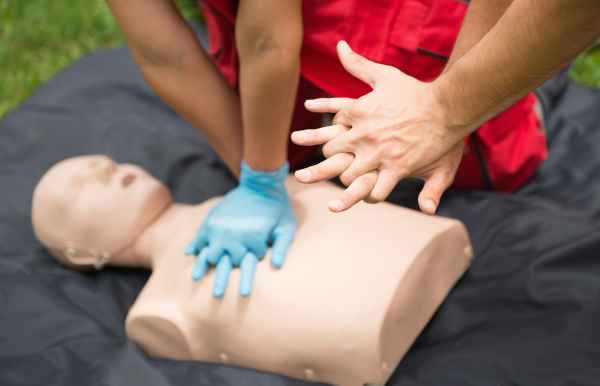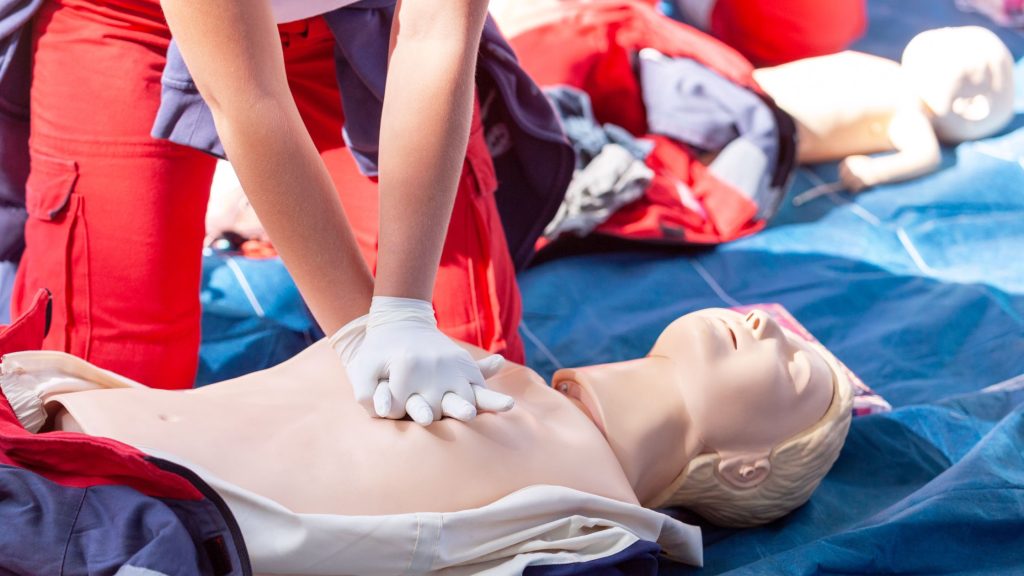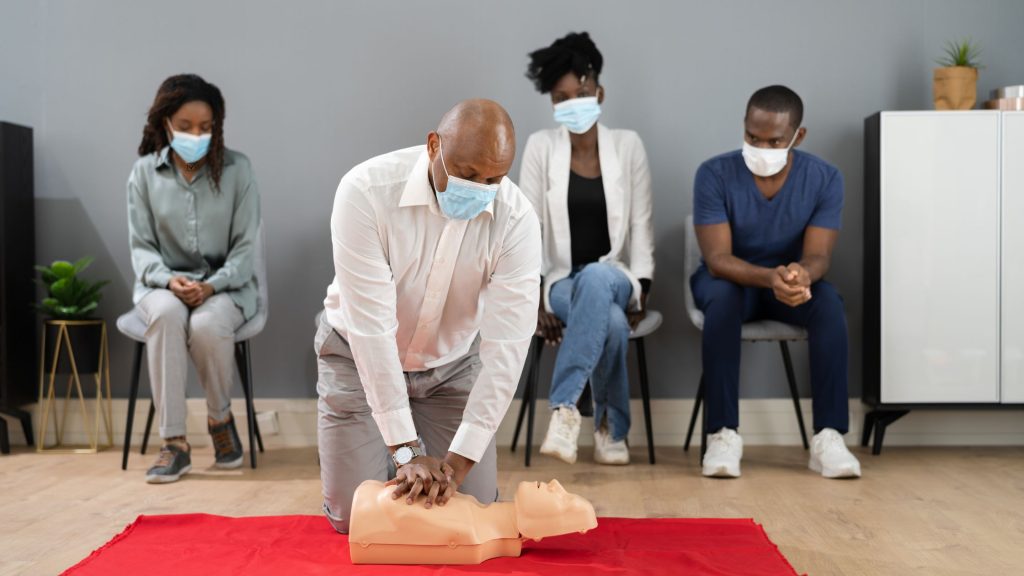If you’re pursuing a teaching career in California, you’ve likely asked yourself, “Do California teachers need to be CPR certified?” The answer is yes! CPR certification is a key requirement for teachers working in California’s K–12 public school system. To receive a California teaching credential, educators must complete CPR training that covers infants, children, and adults, as well as AED (Automated External Defibrillator) use and basic first aid.
In this blog, we’ll walk through the CPR requirements for teachers in California, explore why the certification is necessary, and explain how to get certified.
Why is CPR Certification Important for California Teachers?
California schools are busy environments where minor injuries and serious medical emergencies can occur without warning. Teachers are often the first adults on the scene when a student experiences a health crisis, whether it’s choking, a sudden asthma attack, a seizure, or cardiac arrest. These incidents require immediate action, and having the proper training makes all the difference.
This is why the California teacher CPR requirement isn’t just a formality. It’s a way that ensures educators are prepared to respond quickly and confidently in emergencies. In addition to promoting student safety, having CPR and first aid training offers peace of mind to parents, school administrators, and the broader community. Schools are expected to be safe spaces, and trained staff members are a vital part of maintaining that standard as they are the first people on the scene.
Register for First Aid Training
What CPR Training is Required for California Teachers?
To satisfy the teacher CPR requirement in California, educators must complete a course that includes:
-
CPR for adults, children, and infants
-
AED training
-
Basic first aid
This full-spectrum training is mandated by the California Commission on Teacher Credentialing (CTC) and applies to both preliminary and clear credentials. When applying for a teaching credential, candidates must submit documentation that proves they have completed CPR training encompassing these components.
The certification must be completed through a recognized organization. One of the approved providers is the American Red Cross. As a training partner of the American Red Cross, our team at Coast2Coast First Aid & Safety can help you with your certification! Many programs offer flexible options, including blended learning formats that combine online coursework with in-person skill evaluations. However, fully online-only CPR certifications are sometimes accepted, but it is best to confirm with your employer. We highly recommend completing an in-class or online blended training method instead of an online only course so you can practice hands-on skills.
It’s essential to note that while the state requires CPR training to issue credentials, individual school districts may have additional policies that exceed the minimum state requirement. For example, some districts may require teachers to keep their certification current while employed, even though the state does not mandate renewal after the initial certification for credentialing purposes.

Do California Teachers Need to Be CPR Certified to Get Their Credential?
Yes. To obtain a teaching credential in California, such as Los Angeles, teachers must hold a valid CPR certificate that includes training in infant, child, and adult CPR, AED use, and first aid. This requirement applies to individuals seeking both a preliminary credential and those completing a teacher induction program for a clear credential.
The CPR certification must be completed before submitting the credential application to the Commission on Teacher Credentialing. It is not optional, and incomplete CPR training will delay or prevent credential approval. Some credentialing programs may offer guidance on where to obtain the required certification, but it is the applicant’s responsibility to ensure that their training meets all state guidelines. At Coast2Coast, we’ll provide you with a smooth experience as you earn your CPR certification.
Once hired, a teacher’s school district may set its own policies regarding the frequency of renewal. Most districts follow a two-year renewal schedule for CPR certification, which is aligned with the typical expiration of most CPR cards issued by major certifying bodies.
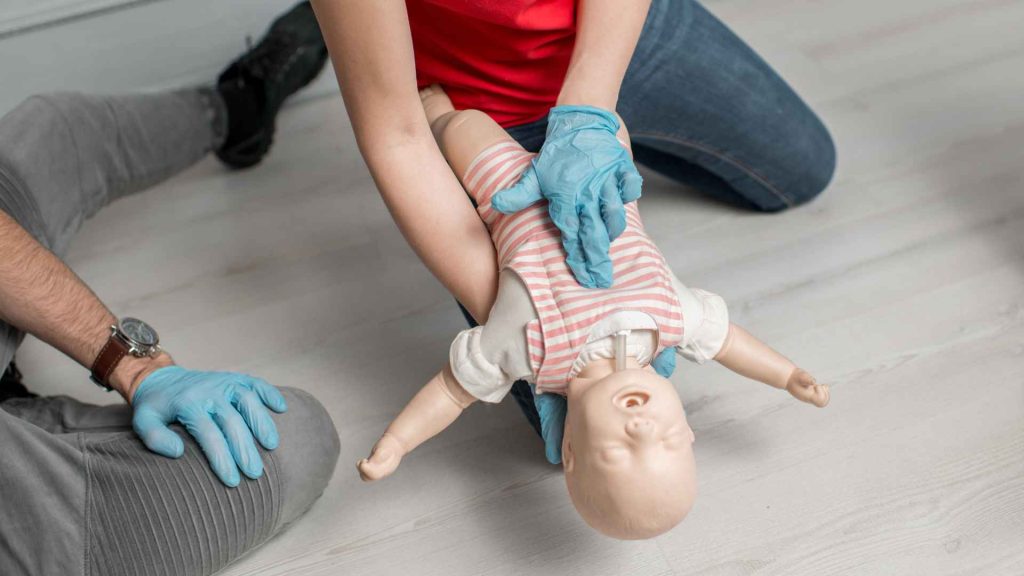
How Can Teachers Get or Renew Their CPR Certification?
Teachers in California have several options for obtaining CPR certification. The most important consideration is to choose a course that meets the requirements set by both the state and the district.
First, select a CPR provider, such as Coast2Coast First Aid & Safety, that offers training in adult, child, and infant CPR, AED, and first aid.
At Coast2Coast, we offer blended learning options, where participants complete the theory portion online and then complete an in-person session to demonstrate hands-on skills. This can be a convenient solution for busy educators or aspiring teachers who are balancing coursework and field placements.
Once the training is complete, participants will receive a certificate, valid for two years. Teachers should ensure that the certificate clearly lists all required components and keep a digital or printed copy to submit with their credential application or employer records.
To maintain certification, teachers should enroll in a renewal course before their current certification expires. Renewal classes are often shorter than the initial certification but still include both theory and practical skills.
Yes. The California Commission on Teacher Credentialing requires CPR certification as a condition for obtaining a teaching credential. The certification must include adult, child, and infant CPR, AED, and first aid.
You may complete the theory portion online, but you must also participate in an in-person skills assessment to meet the full certification requirement. Courses that are entirely online without hands-on evaluation typically do not meet state or district standards.
Some employers may accept online only training, but it is highly recommended to complete a course with an in-class component to practice hands-on skills.
The Commission on Teacher Credentialing requires CPR certification. After teachers are credentialed, individual school districts may enforce policies requiring current certification during employment.
Letting your certification expire won’t affect your teaching credential, but your school district may not allow you to continue teaching until you renew your certification. In some cases, an expired certification could result in suspension from duties involving student supervision.

The Importance of Staying Certified as a California Teacher
CPR training is more than just a box to check on an application. It’s a life-saving skill that empowers teachers to protect the students in their care. The CPR requirements for teachers in California ensure that educators are ready to act in emergencies, reinforcing the school’s role as a safe and supportive environment.
Whether you’re beginning your journey as a teacher or renewing your certification, make sure your CPR training is up to date and meets all California state and district guidelines. It’s a small investment of time that could make a big difference in someone’s life.
Questions on how to get certified? Contact our office today!
